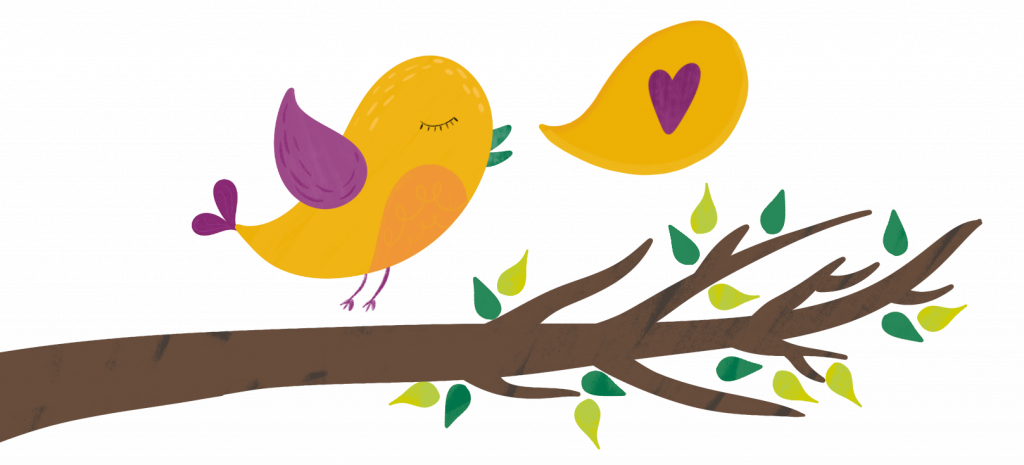Want to know the best way to introduce the letter k sound?
Are you wondering if the program you’re using to teach letter sounds could be more effective or engaging for your preschool or kindergarten students?
There are different sequences for letter-sound introduction. Some prefer a-to-z order, while others like to start with the most common letters first. Not only that, but there are different ideas for the best way to introduce them.
While I don’t have strong feelings about the particular order in which letters and sounds are introduced, I do have an enthusiastic preference for HOW to introduce each sound and its related letter.
Many teacher guides include a script like this:
“Here is the letter k (showing the printed letter card). K says /k/, as in kite (showing a picture of a kite on the bottom of that same card). Repeat after me: ‘K, kite, /k/'”.
That’s one way to do it. It’s how I did it for many years.
However, after years of diving into research studies and professional books, as well as attending countless trainings in structured literacy, I’ve made easy changes to my instructional routine of teaching letter sounds and have seen encouraging results.
That’s why I’m sharing what I do and why I do it in this post. I hope you’ll see a positive difference in how easily and quickly your students learn letter sounds using these simple steps:
Routine for Introducing the Letter K and Its Sound
You can watch this video to get an idea of the entire routine. You can also play it for your students!
Start with speech.
Why?
Our brains are wired for speaking, not reading. Talking comes naturally; reading does not. I made the switch to start with speech, as opposed to print, for that reason. I’ve also noticed increased engagement this way. Starting my lesson by asking my kids to repeat words orally, and showing photographs of things they’re interested in like kangaroos and karate, is not only less intimidating to young children who have no idea how to read at this point, but it’s also more fun.
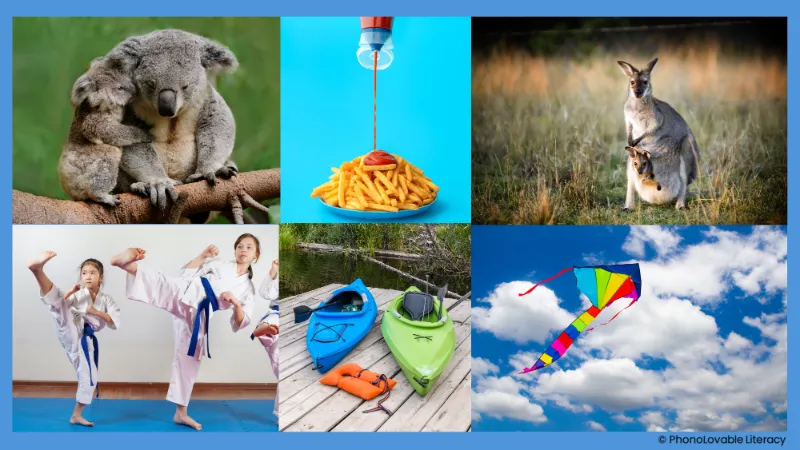

How?
Say 3-6 words that begin with the letter k, such as koala, ketchup, kangaroo, karate, kayak, and kite. Ask children to repeat each word after you say it. Showing an image of each word not only helps with engagement but can be especially helpful for students with limited English vocabulary. Tell students that all of these words begin with the sound /k/.
Draw attention to what your mouth does when you make the /k/ sound.
Why?
Why is the /k/ sound represented by the letter k? There is no inherent connection. We have to explicitly draw the connection between the sound and letter. Paying attention to what our mouths do when making the sound helps make this relationship a little more concrete. Plus, it’s fun to do.
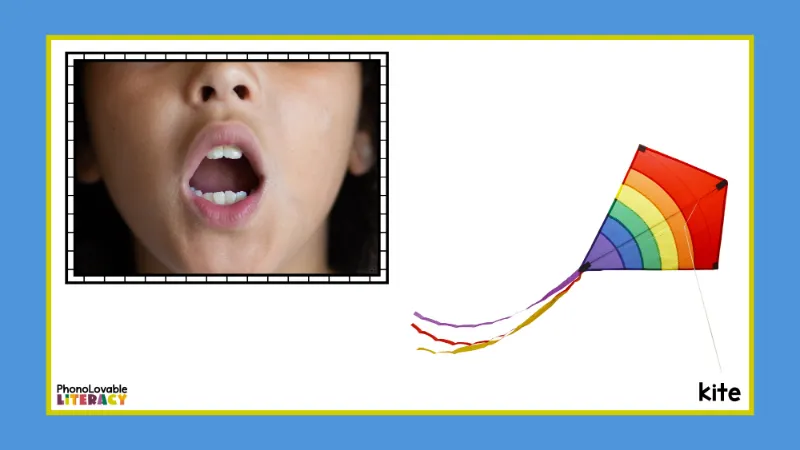

How?
Ask students to notice what their mouth is doing to make the sound /k/. If you teach a small group, hold up a mirror to let students look at their own mouths. If you have a larger group, simply model with your own mouth and/or show a sound articulation card (mouth pic).
To make this sound, you need to press the back of your tongue to the back of your mouth. Model this for your students and/or show a “mouth pic” card such as the one above. Tell students that they don’t need to open their mouths this wide, but it is helpful to introduce the sound this way so children can see the elevation of the base of the tongue. This is hard to see with the jaw less open. A slight amount of air comes out of your mouth. Ask students to make the sound themselves and feel the air come out.
Introduce the printed letter with an EMBEDDED mnemonic.
Why?
Research going back decades revealed that using embedded images, keyword pictures displayed within the letter as opposed to showing a picture separate from the letter (beside, above, or below), resulted in students improving both the acquisition AND retention of letter-sound correspondences. In fact, it was more effective and efficient. Using pictures, especially ones of relatable objects, to help kids associate phoneme-grapheme relationships makes sense. But it was great to read several research studies to confirm this!
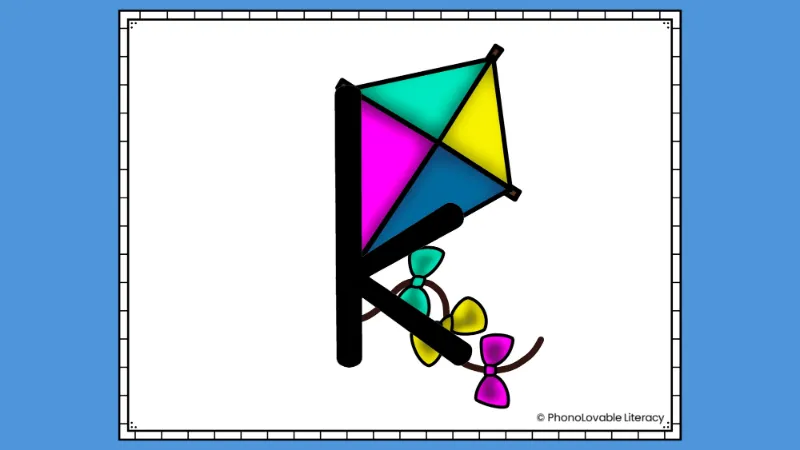

How?
Now it’s time to introduce the printed letter. But not just a plain letter, an embedded letter. The image of a keyword such as a kite in the letter k helps solidify the connection between letter and sound.
Model and practice how to write the letter.
Why?
Reading and writing go hand-in-hand to build a strong foundation of literacy. They are the building blocks of knowledge and expression. We teach letter sounds so that students may not only decode new words but learn to encode them as well. As an interventionist who works with students from kindergarten to 4th grade, I’ve seen how hard it is to undo incorrect letter formation once it’s become a habit. I try to prioritize letter formation as early as possible.
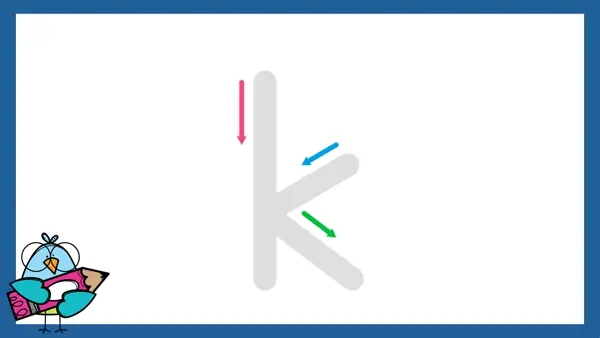

How?
I find most letter formation scrips in teacher’s guides to be complicated and formal. I try to make my language sound simple and kid-friendly so students are more likely to internalize it. You may have different wording from a program you’ve used, or you may wish to change up how you say this, but here’s what I say as I model how to write the lowercase letter k:
“Start at the top. Straight line down. Jump up to the middle. Slanted line in. Slanted line out (to touch the bottom line).” I model with my hand in the air and/or show an animated slide on my computer (in small group) or smart TV (in whole group). Ask students to follow along with their fingers in the air. If children are seated at desks, ask them to finger-write on the desk.
After a few finger-writing attempts, I have my students practice with pencils on paper or dry-erase markers on whiteboards. Since k can be a tricky one to write, I keep a close watch as they write, giving guidance, encouragement, and corrective feedback as needed.
Research-Aligned Alphabet Resources
Need easy-to-use resources to implement the steps above?
Here are my recommendations for introducing the letter sound k and the rest of the alphabet to your preschool or kindergarten students:
Initial Sound Slides: These no-prep slides introduce each letter sound in the most effective and efficient way. With each click, you will show images of interesting photographs containing the beginning sound, a photo of a child making the sound along with a keyword image, the letter with an embedded mnemonic image, and lastly, an animated letter formation slide (one for uppercase and one for lowercase letters).
Mnemonic Alphabet Articulation Mouth Cards | Alphabet Posters with Real Pictures: If you prefer a paper option or don’t have access to digital resources, you may like these printable, 1-page posters of mouth pics along with the embedded mnemonic letters. It’s also a nice way to display the alphabet if you have classroom wall space.
Alphabet Picture Cards with Embedded Mnemonics: This set of printable pages comes with embedded letter cards in two sizes. Teach phonemes for 21 consonants, 5 short vowels, AND consonant digraphs WH, TH, SH, CH, and CK.
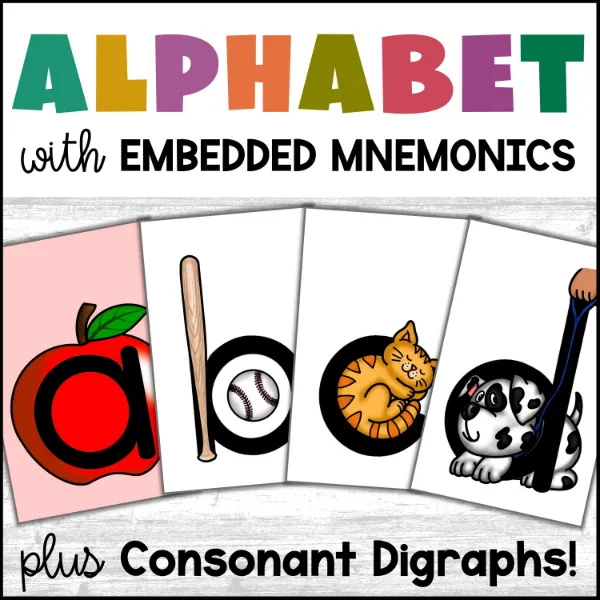

Get a free set of small embedded letter cards when you join us in our newsletter community.
Looking for an “everything bundle” of embedded letter resources, including digital slides, letter cards, worksheets, games, and more? Save nearly 50% and receive all 12 resources. Get your students quickly and effectively mastering letter sounds so they can begin the even more exciting discovery of how to read and write words!
Sources:
Ehri, L. C., Deffner, N. D., & Wilce, L. S. (1984). Pictorial mnemonics for phonics. Journal of Educational Psychology, 76(5), 880–893. https://doi.org/10.1037/0022-0663.76.5.880
Ehri, L. C. (2013). Orthographic Mapping in the Acquisition of Sight Word Reading, Spelling Memory, and Vocabulary Learning. Scientific Studies of Reading, 18(1), 5–21. https://doi.org/10.1080/10888438.2013.819356
Ehri, L.C. (2022). What Teachers Need to Know and Do to Teach Letter–Sounds, Phonemic Awareness, Word Reading, and Phonics. The Reading Teacher, 76(1), 53-61. https://doi.org/10.1002/trtr.2095
McNamara, G. (2012). The effectiveness of embedded picture mnemonic alphabet cards on letter recognition and letter sound knowledge. Theses and Dissertations. 302. https://rdw.rowan.edu/etd/302
Shmidman, A., & Ehri, L. (2010). Embedded Picture Mnemonics to Learn Letters. Scientific Studies of Reading, 14(2), 159–182. https://doi.org/10.1080/10888430903117492
